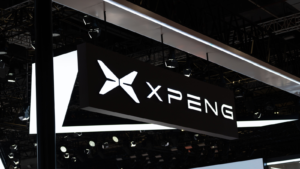For one, EV sales are accelerating in the U.S. According to Kelley Blue Book, EV sales jumped about 11.3% in the second quarter to 330,463.
Plus, as noted by Cox Automotive Director Stephanie Valdez Streaty, “We remain bullish on electric vehicle sales in the long term. The growth will, at times, be very slow, as all-time horizons in the automobile business are vast, but the long-term trajectory suggests that higher volumes of EVs will continue over time. As EV infrastructure and technology improve, and more models are launched, many shoppers sitting on the fence will eventually choose an EV.”
Even China is seeing an uptick in EV sales thanks to tax breaks and policy. In June, for example, “sales were helped by Beijing’s move in late April to introduce subsidies to entice car owners to replace their vehicles, adding to tax breaks already in place for buyers of electric vehicles.”
With sales set to accelerate from here, investors should use weakness in electric vehicle stocks as an opportunity to buy. That includes:
Tesla (TSLA)

Thanks to a vicious market pullback, Tesla (NASDAQ:TSLA) gapped from about $250 to a recent low of $192.67. Not only is it now at strong support, but it’s also over-extended on RSI, MACD and Williams’ %R. From its last traded price of $190.25, I’d like to see an initial gap refill at $209.
Helping, analysts at Morgan Stanley named TSLA a top pick in the auto sector. With an overweight rating and a price target of $310 on the stock, the firm noted TSLA may be “cornering the market on ZEV (zero-emission vehicle) credits and has seen increased contribution from recurring services revenue.”
Also, while earnings weren’t great, it’s priced into recent weakness. While its earnings per share of 52 cents missed by 10 cents, revenue of $25.5 billion, up 2.3% year-over-year, did beat by $760 million. In addition, many of these numbers could improve should the Federal Reserve cut interest rates as expected this year.
XPeng (XPEV)

I’d also use weakness as an opportunity to buy XPeng (NYSE:XPEV).
After slipping from about $9.25 to $7, the EV stock caught strong support and could easily accelerate higher. Helping, the company just said it delivered 11,145 Smart EVs in July, which was up about 1% year-over-year, and 4% month-over-month. Plus, in the first seven months of the year, it has now delivered 63,173 Smart EVs, which is 20% year-over-year growth.
Recent earnings haven’t been too shabby either. In its first quarter, the company announced an EPS loss of 10 cents on sales of $907 million. The Street was looking for a loss of 33 cents on sales of $859 million. For the second quarter, which we’ll learn about in late August, the company expects to sell between 29,000 and 32,000 EVs, which is 25% to 38% year-over-year growth. It also expects for sales to jump about 60% to $1.1 billion.
“Despite fierce market competition, the company’s gross profit margin saw a substantial increase…in the first quarter of 2024,” said Co-President Brian Gu, as quoted by Barron’s. “This signifies that XPeng, based on its smart EV business, has developed a unique approach to lift its profitability and international market potential by providing smart technologies.”
Global X Autonomous & Electric Vehicles ETF (DRIV)

Or, if you want to diversify with 75 EV and autonomous-related stocks, you can always jump into the Global X Autonomous & Electric Vehicles ETF (NASDAQ:DRIV).
With an expense ratio of 0.68%, the $20 ETF invests in “companies involved in the development of autonomous vehicle software and hardware, as well as companies that produce EVs, EV components such as lithium batteries, and critical EV materials such as lithium and cobalt,” as noted by GlobalXETFs.com.
Some of its top electric vehicle stocks-related holdings include Tesla, Microsoft (NASDAQ:MSFT), Alphabet (NASDAQ:GOOG), Nvidia (NASDAQ:NVDA), Qualcomm (NASDAQ:QCOM), Toyota Motor (NYSE:TM), Intel (NASDAQ:INTC) and NXP Semiconductor (NASDAQ:NXPI) to name a few.
On the date of publication, Ian Cooper did not have (either directly or indirectly) any positions in the securities mentioned. The opinions expressed in this article are those of the writer, subject to the InvestorPlace.com Publishing Guidelines.
On the date of publication, the responsible editor did not have (either directly or indirectly) any positions in the securities mentioned in this article.
Ian Cooper, a contributor to InvestorPlace.com, has been analyzing stocks and options for web-based advisories since 1999.
